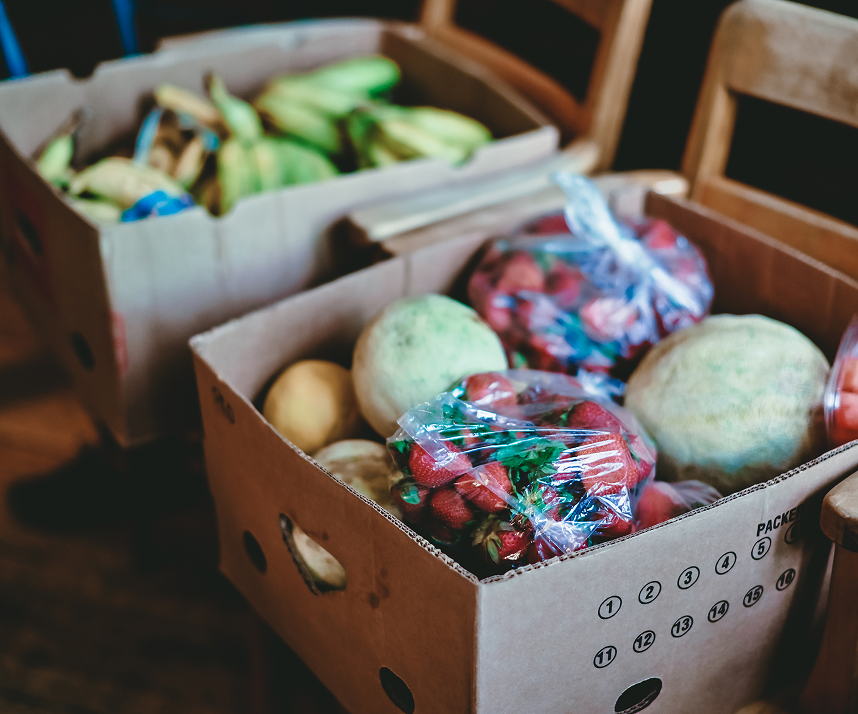The waste that is not: ending food waste
- Opinion
Écrit par Marie-Pier Ethier
19 March 2024
“The best waste is that which is not produced!”
This is the mantra of the Association québécoise zéro déchet (AQZD) to introduce the zero waste movement. Specifically, we are asked to cut off the source. Or rather, the sources.
Yes, there are many sources of objects, packaging, materials of all kinds and even food that ultimately end in the bin, whether it is brown, blue or black.
If the zero deficit seems unattainable in the eyes of many, let us still push the thought to the end; is it possible to live without producing waste?
The answer to this question is not simple, and requires first to clarify another point: what is it, a waste ?
Leave his mark
The living is characterized by the consumption of matter, its transformation and finally the rejection of what is unusable. It is this last result that could be described as waste. No matter which kingdom it belongs to, even the smallest living organism uses any form of energy, and expels the remains of this metabolism out of itself.
But there is the beauty of it: in nature, even what is rejected from one organism becomes a form of food for another.
We humans (with a few exceptions) have more or less decided that we do not respect this logic.
Indeed, in addition to our inevitable biological waste, we leave behind a multitude of wastes that litter our living environments in many forms. By the way, they have all kinds of impacts on the environment and those who live there, including human populations.
They accumulate without finding a buyer and, despite many initiatives of revalorization, it is necessary to admit that the management of our rejects does not come close to the self-regulatory system that nature has developed.
Ours, operating in parallel, is a unique model where cost-effectiveness takes precedence over reduction at source, and cracks more and more under the pressure of the growing amount of waste.
In view of this, what if we want to tackle the problem and get out of our closed circuit? Is that even possible? And is all waste equal?
Hide these scraps that I cannot see !
Getting our unwanted ones out of sight is basically what our system consists of. Consequently, it becomes difficult for everyone to grasp the full extent of the problem, as well as its nuances.
So, while our inorganic waste continues its path to the landfill away from sight, we continue our lives. On the other hand, our organic waste, full of potential, is struggling to be recycled adequately. But why?
A study conducted jointly by La Transformerie and the UQAM Research Chair on the Ecological Transition provided a picture of food waste in retail stores and households.
When the results came out in February 2020, the most telling was that there was no consensus on what constitutes food waste.
Indeed, it can be read that “the use of certain terms — waste, losses, surplus, unsold, etc. — at the expense of other [terms] depends on how this problem is approached and therefore influences its management and the search for solutions to remedy it”.
In other words, depending on the role one plays in food systems (producer.ice, distributor.ice, grocery manager.e, consumer.rice, etc.), our definition of waste will be tainted by it, as well as how we address it.
Does this mean that waste is nothing more or less than a terrible misunderstanding, a lack of communication between the actors of different sectors? In part, yes.
Nobody wants to waste. But, because of the lack of cohesion, basic foodstuffs for human consumption are still available in significant quantities.
So that means that a very large part of what we call “waste”, and treat it as such, is not.
Playing on words : a question of cohesion
In the case of the food industry, the study proposes a clear and comprehensive definition of waste to better target the weaknesses that cause it:
“Food waste is defined as any part of a edible food that has been hunted, grown, fished, raised, produced or harvested, whether intentionally or not, does not end up for direct human consumption.”
This definition may seem radical or moralistic. However, instead of pointing the finger at a single culprit, it aims to highlight that responsibility is shared by all actors in food systems. In addition, the clear identification of the concept of waste allows for the emergence of solutions and opportunities that have hitherto remained in the shadows.
From production to processing, distribution and marketing to the drawers of our refrigerators, the journey of food and its derivatives must be rigorously studied at every level.
Whether they are described as unsold, production residues or leftovers of meals forgotten, if these commodities do not finish their course in the stomach of one. e human. e, it is food waste.
Take ownership of the struggle
So, is it possible to live without producing waste? As we saw earlier, not really.
However, in light of this information, it is understood that once the waste has been removed from the equation, the actual waste will fall significantly. In Quebec, 1.2 million tonnes of food are consumed every year and not diverted from their primary purpose: feeding people.
But how can we achieve this? Many initiatives and actions are already underway, and we are invited to follow suit. The important thing is first of all to be aware of our share of responsibility to understand in all honesty and humility where we can improve our ways of doing things, while respecting our individual realities.
In the next article, we invite you to dive into the heart of food systems. We will unravel the different circuits, the stages that constitute them, and the multiple solutions that are attached to them according to our position. Yes, yes, there are solutions!
It’s a date next month, for part 2 of 3 of our dossier on food waste!

